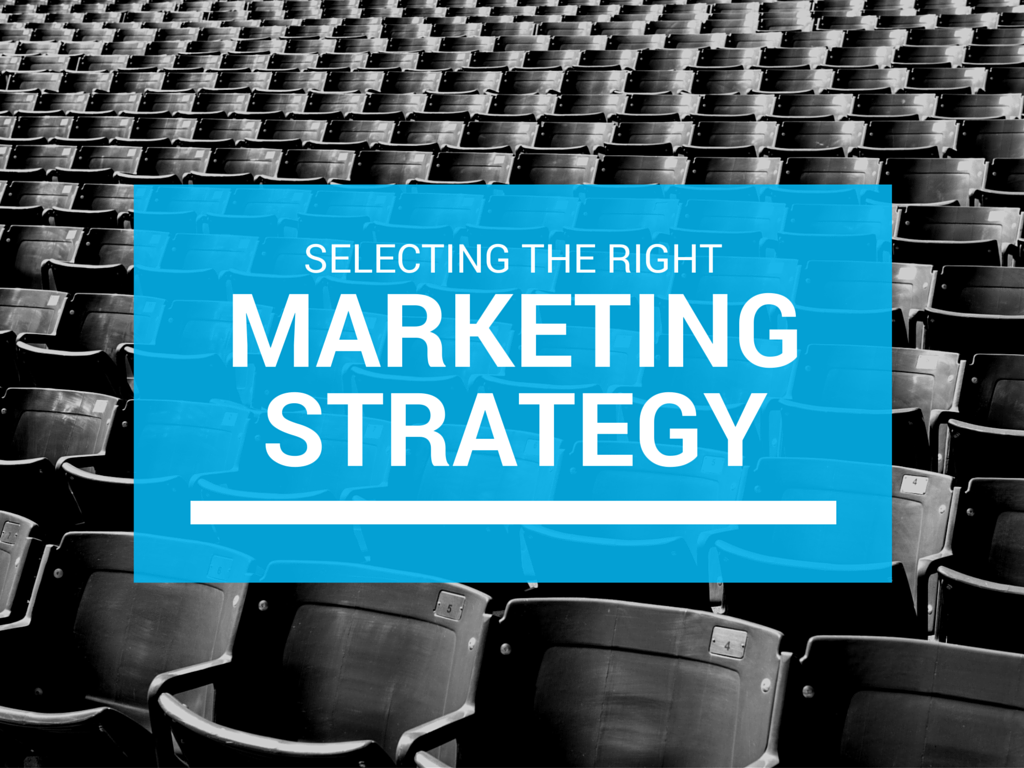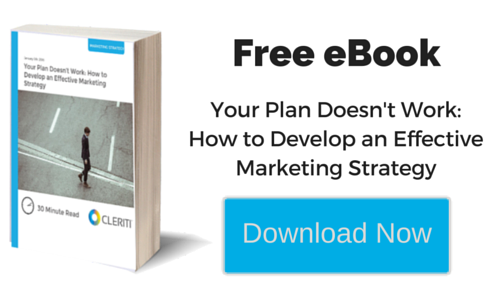- Mar 2, 2016
- By Andrew Rogers
- In Marketing Strategy and Planning
The Effective Marketer's Survival Guide to Choosing a Marketing Strategy That Works

![]()
In many ways, there’s never been a better time for developing an effective marketing strategy. With modern marketing tools, campaigns can be launched quickly and tracked effectively so you can measure results and calculate your ROI. And if you lack direction in where to take your strategy, there are tons of online resources that can point you in the right direction.
But the number of options and helpful tools out there can also be overwhelming. It’s like signing into Netflix — you can watch virtually anything you want, but where do you start?
With that in mind, we’ve created a guide designed specifically to help you get started with developing a marketing strategy that works and opening your mind to the possibilities that exist beyond your current plan. It’s not about trying out the latest marketing toys, and it’s not about occupying every marketing channel at once. Instead, this guide will help you figure out the right strategy for your company.Paralysis by analysis not only leads to unnecessary headaches, but it can also lead to bad choices that kill the effectiveness of marketing campaigns before they even start.
Step 1: Define Your Audience
Why is figuring out your customers more important than focusing on your own company? Because being customer-focused is the only way to meet the expectations to today’s empowered consumers. Besides, the ultimate goal of marketing is to engage your desired customer base, which is a two-pronged approach. Not only do you have to figure out what will appeal to that audience, but you also have to identify who that audience actually consists of.
The single biggest asset you’ll acquire while developing a marketing strategy that’s actually effective is your buyer persona. In essence, you want to identify every worthwhile trait about your ideal customer, and then use that information as the basis for all of your marketing efforts. Ultimately, it will be this buyer persona that dictates how your strategy will move forward.
Since your eventual success will depend on your ability to attract and engage your buyer persona, it’s in your best interest to gather as much information as you possibly can about this target customer. How old are they? What gender are they? How much do they make each year? Do they prefer buying online or in-store? Are they tech-savvy? There are no dumb questions here. Conduct surveys, speak to current customers and dig into this persona’s pain points and challenges. Anything you can do to educate yourself about your ideal audience is well worth your time and effort.
As is the case with virtually all things related to content marketing, there are online tools that can help you to drill down on your ideal customer. Hubspot’s Make My Persona tool is a great way to brainstorm and pick up on pieces of the puzzle that you might not think to include. Best of all, you’ll literally create the document around which your entire marketing strategy will be based.
Over time, your buyer persona may change, and you might even add in new personas as you attempt to target different segments of the market. But for now, keep it simple and focus on the customer that will fit best with your company’s product, service and mission.
Step 2: Cut Through the Clutter
Now that you’ve defined your ideal customer base, it’s time to develop a strategy specifically geared towards this audience.
First, take a look at your current marketing strategy. It may or may not be working, but odds are good that there’s at least something of value in there. Keep the good stuff, but understand that it might not necessarily be a great fit with your target market. Identify areas where you need to do some shaping up in order to appeal to your desired customers.
Once you’ve evaluated your current strategy and have set goals for how to tweak it to meet the needs of your updated buyer persona, you have to figure out how you can get there. That is, what methods can you use to reach your buyer persona? What marketing messages can you craft to appeal to their needs and desires? This is why it’s so important to capture everything about your persona before you start actually marketing to this group. For instance, you might think that marketing to 60-year-olds would be a largely offline endeavor. However, a little research would show that this group is quite active on social media, and they’d love to read and share your Facebook posts while trading pictures of their grandchildren.
This is a good time to remind yourself of your task as a marketer. Your job goes well beyond creating flashy blog images and enticing LinkedIn advertisements. Your primary task is to figure out the needs of your customers, and get those people the information they need before they get it from your competitors. It’s only when you have the attention of your target audience that you can sell to that group, so make sure you’re in sync with what messages would attract and engage them, and what channels to publish those messages on.
Step 3: Define Your Brand Voice
So far, you’ve figured out who you’re marketing to and how you plan on marketing to those people. Now, what do you have to say for yourself?
Crafting your brand voice is where your company can really stand out. It’s the perfect opportunity for your organization to show off its personality and values. If you have an established history, you can reinforce these traits through your brand voice. If you’re a startup, you’ve got a blank slate to create a voice that will resonate with your buyer persona.
If you aren’t sure where to start, you’re not alone. Many companies are so worried about getting people to like them that they never really develop a consistent brand voice. Don’t make this mistake. A great way to figure out what your company is all about is to decide what type of personality your brand has. In other words, if your brand was a person, what would it be like? Would it be the funny, wisecracking kid in the back of the class, or would it be the person that would show up early in the morning for extra help? The answer should be a combination of your company’s existing values and that which will help your company appeal to your ideal customers.
Every company wants to serve up the perfect voice for its desired market, but being fake isn’t the best way to get there. People can see right through a company that tries to be something it isn’t. That’s not to say that you can’t be funny if you’re in a super-serious business like security or insurance. There’s always a way to get your message out in an engaging and customer-friendly way. Use the information you learned while compiling your buyer persona, stay true to yourself, craft a voice that both you and your customers relate to and you’ll have a winner on your hands.
Step 4: Restrategize
By this point, you’ve got most of the groundwork laid for your future marketing success. Your only remaining tasks are to get the ball rolling, and to keep it rolling. When embarking on an ambitious marketing project such as the one you’re about to undertake, it’s best to limit your focus to the upcoming quarter only. This will enable you to keep your focus on your ideal customer and what they’re experiencing at that particular moment. It also gives you a three-month time frame to work from so that you can tweak your strategy for the next quarter.
Additionally, within the three-month quarterly window, you should only work one week at a time. Create content a week before it’s published so you can include any recent news or trends that might engage your ideal customers. After all, the world might look completely different a week from now.
As we say at Cleriti, “No benefit, no business.”
At the end of the day, developing an effective marketing strategy depends on how well you know your ideal customers, if you understand how to craft messages that engage them and if you can anticipate where, how and when to publish those messages to maximize your effectiveness. And always keep in mind that if you don’t clearly address how you can help your audience, they’ll seek out a company that does. As we like to say at Cleriti, “No benefit, no business." Create a customer-focused marketing strategy that works on a quarterly basis, and you’ll be on your way to engaging an audience that is a great fit for your company.





